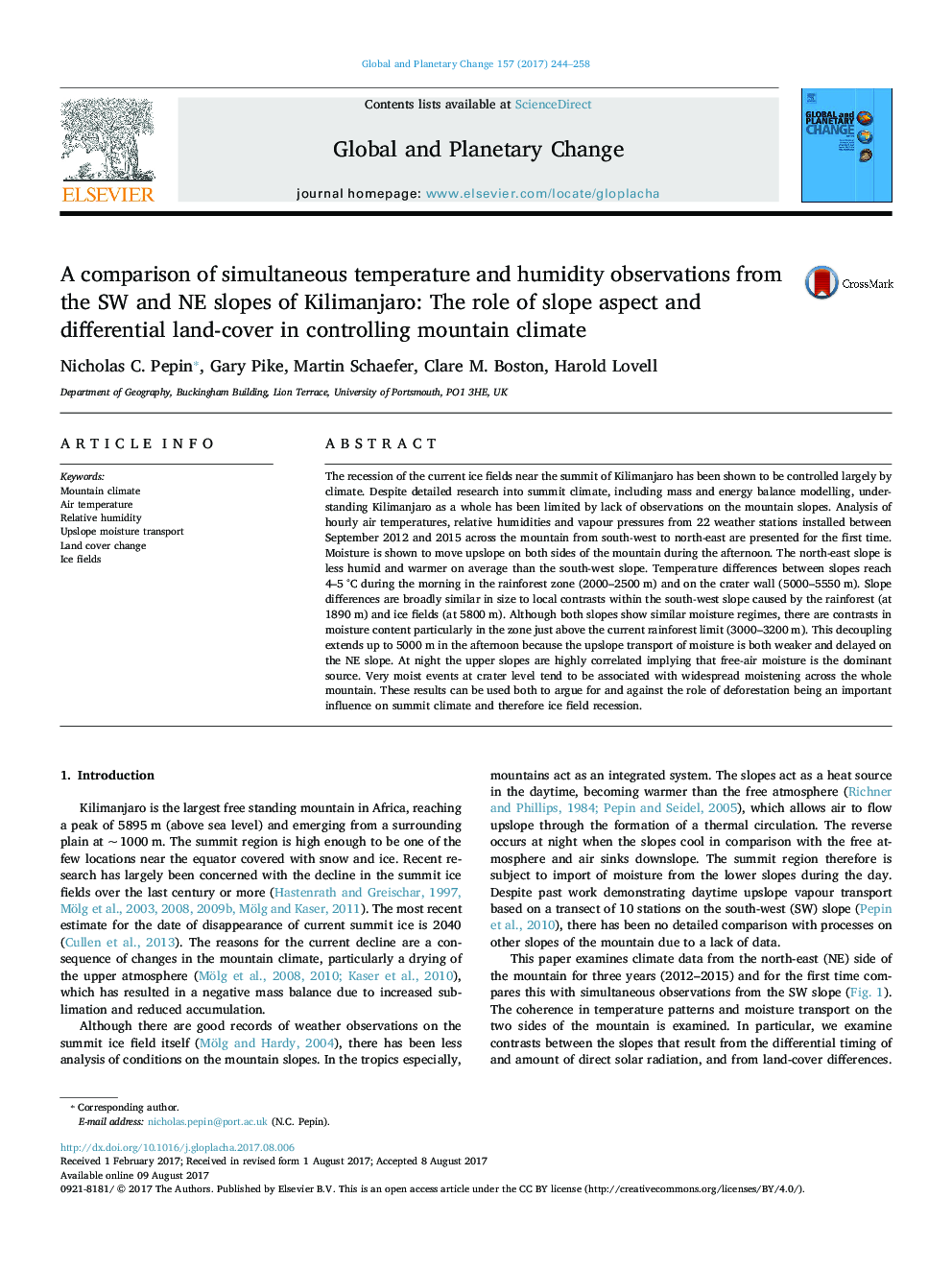| کد مقاله | کد نشریه | سال انتشار | مقاله انگلیسی | نسخه تمام متن |
|---|---|---|---|---|
| 5755324 | 1621625 | 2017 | 15 صفحه PDF | دانلود رایگان |
عنوان انگلیسی مقاله ISI
A comparison of simultaneous temperature and humidity observations from the SW and NE slopes of Kilimanjaro: The role of slope aspect and differential land-cover in controlling mountain climate
دانلود مقاله + سفارش ترجمه
دانلود مقاله ISI انگلیسی
رایگان برای ایرانیان
کلمات کلیدی
موضوعات مرتبط
مهندسی و علوم پایه
علوم زمین و سیارات
فرآیندهای سطح زمین
پیش نمایش صفحه اول مقاله

چکیده انگلیسی
The recession of the current ice fields near the summit of Kilimanjaro has been shown to be controlled largely by climate. Despite detailed research into summit climate, including mass and energy balance modelling, understanding Kilimanjaro as a whole has been limited by lack of observations on the mountain slopes. Analysis of hourly air temperatures, relative humidities and vapour pressures from 22 weather stations installed between September 2012 and 2015 across the mountain from south-west to north-east are presented for the first time. Moisture is shown to move upslope on both sides of the mountain during the afternoon. The north-east slope is less humid and warmer on average than the south-west slope. Temperature differences between slopes reach 4-5 °C during the morning in the rainforest zone (2000-2500 m) and on the crater wall (5000-5550 m). Slope differences are broadly similar in size to local contrasts within the south-west slope caused by the rainforest (at 1890 m) and ice fields (at 5800 m). Although both slopes show similar moisture regimes, there are contrasts in moisture content particularly in the zone just above the current rainforest limit (3000-3200 m). This decoupling extends up to 5000 m in the afternoon because the upslope transport of moisture is both weaker and delayed on the NE slope. At night the upper slopes are highly correlated implying that free-air moisture is the dominant source. Very moist events at crater level tend to be associated with widespread moistening across the whole mountain. These results can be used both to argue for and against the role of deforestation being an important influence on summit climate and therefore ice field recession.
ناشر
Database: Elsevier - ScienceDirect (ساینس دایرکت)
Journal: Global and Planetary Change - Volume 157, October 2017, Pages 244-258
Journal: Global and Planetary Change - Volume 157, October 2017, Pages 244-258
نویسندگان
Nicholas C. Pepin, Gary Pike, Martin Schaefer, Clare M. Boston, Harold Lovell,